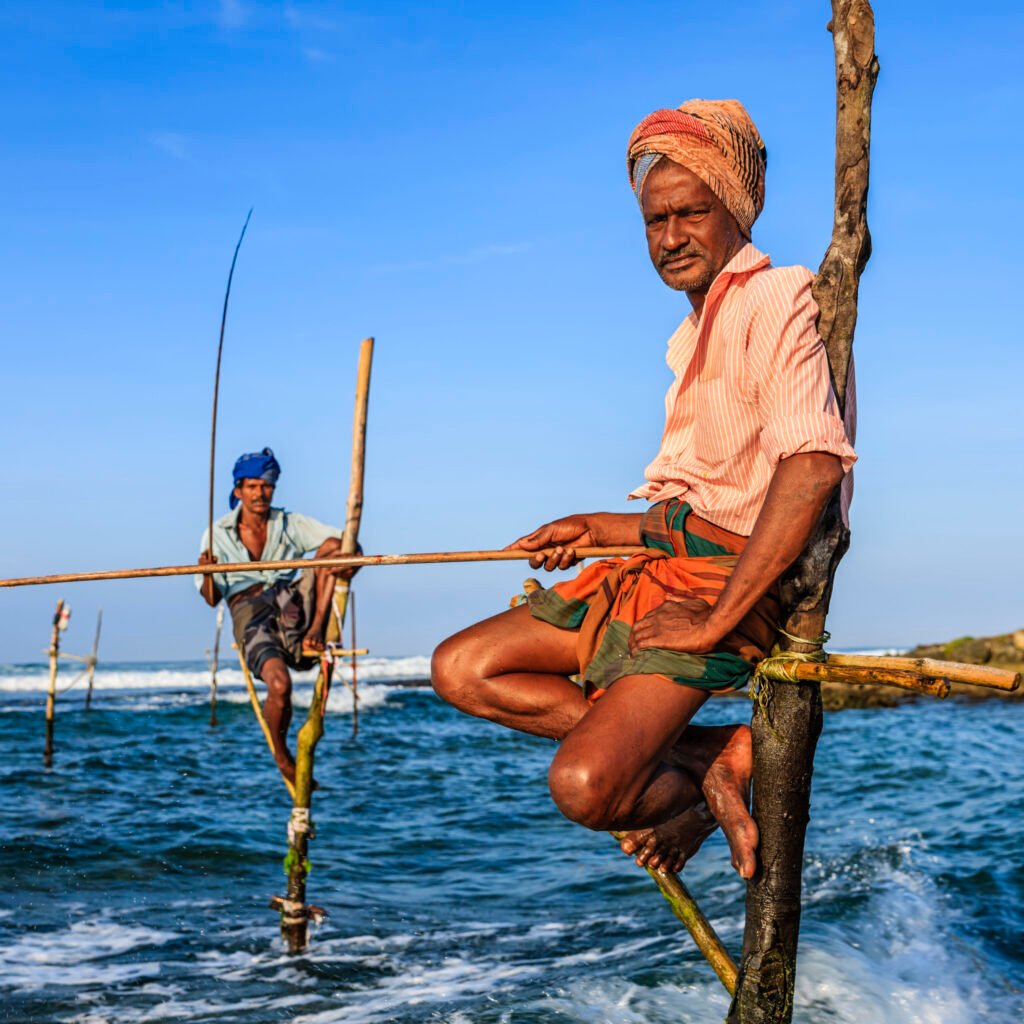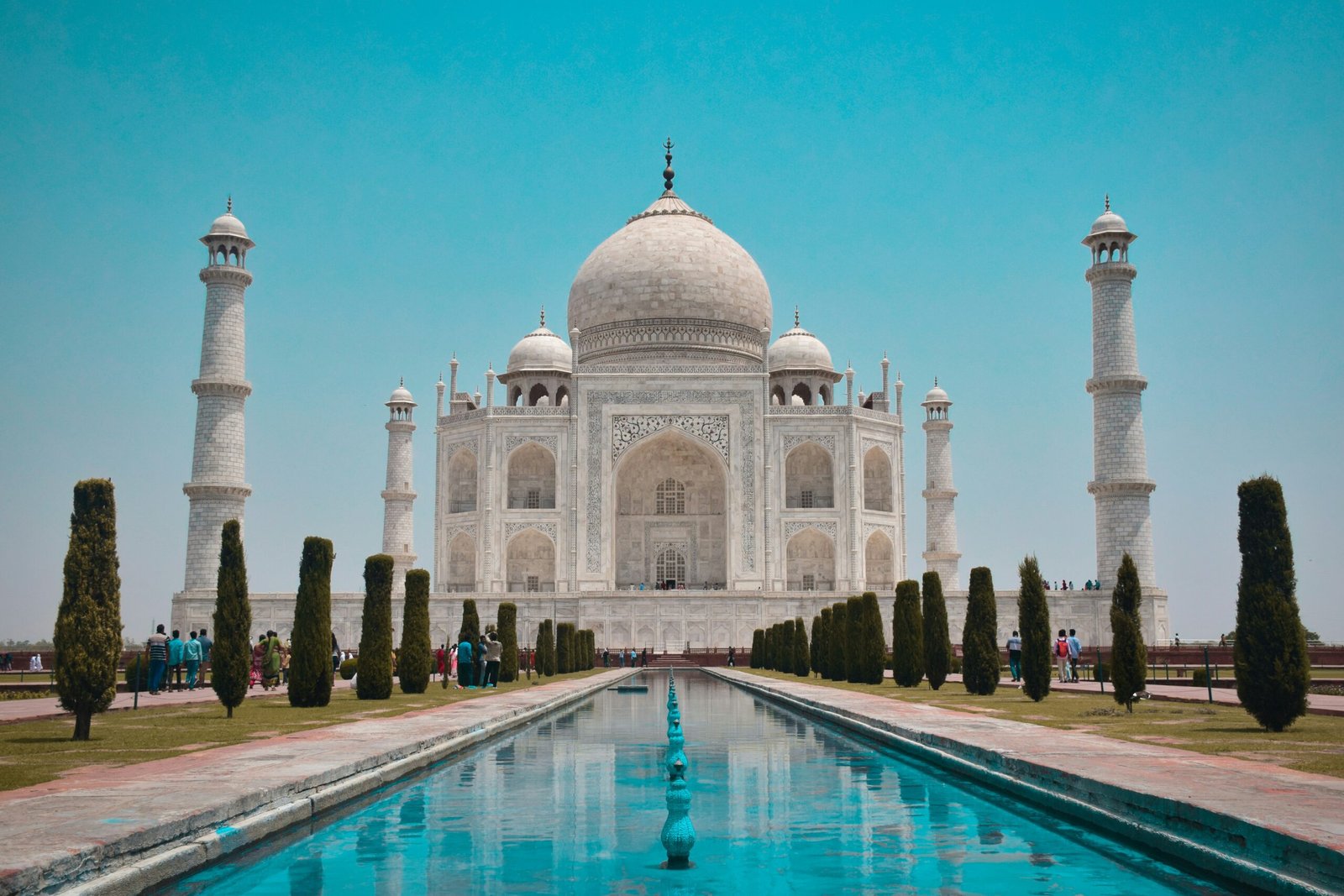The Ultimate Insider’s Guide to Exploring this Tropical Paradise

Sri Lanka is known as the jewel of the Indian Ocean, and for good reason. This teardrop-shaped island nation is home to pristine beaches, lush jungles, ancient temples, flavorful cuisine, and some of the friendliest people you’ll ever meet.
The purpose of this guide is to provide an overview of the top attractions, activities, accommodations, and insider tips for experiencing Sri Lanka like a local. Whether you’re planning a two-week holiday or just a quick getaway, this guide will help you make the most of your time in this incredible country.
The best times to visit Sri Lanka are generally considered to be December to March when skies are blue and the weather is dry. However, the southwest monsoon from May to September brings lush greenery and discounted rates, while April and October offer a pleasant in-between. Whenever you choose to go, Sri Lanka’s diversity means there’s always something wonderful to see and do.
Over the next sections, we’ll explore everything from surfing pristine waves to trekking misty tea plantations to witnessing ancient rituals at temples older than time. Get ready to dive in and discover what makes Sri Lanka a destination like no other.
Top Attractions
Sri Lanka is home to many awe-inspiring attractions that should be on every traveler’s bucket list. From ancient cities to wildlife safaris, there is something for everyone to enjoy.
Sigiriya
Sigiriya, or Lion Rock, is an ancient palace fortress that sits atop a massive column of rock nearly 200 meters tall. Visitors can climb to the top via a series of stairs and witness the magnificent views. The site also contains ancient frescoes and the Mirror Wall which is covered in ancient graffiti.
Temple of the Tooth
The Temple of the Tooth in Kandy is one of the most sacred places for Buddhists in Sri Lanka. It houses the relic of Buddha’s tooth and is located next to Kandy Lake. Visiting during one of the daily puja ceremonies is a magical experience.
Yala National Park
Yala National Park is the best place to spot wildlife in Sri Lanka, including elephants, sloth bears, crocodiles, and the elusive leopard. Safari jeep tours offer the chance to get up close with the animals in their natural habitat. Early morning is the ideal time to visit.
Galle Fort
Galle Fort is a historical fortified city founded by the Portuguese in the 16th century. Today, it’s a UNESCO World Heritage Site with a lively atmosphere, boutique shops, cafes, and ramparts to explore along the coast.
Anuradhapura
Anuradhapura was the first ancient capital of Sri Lanka and home to important Buddhist sites like the Sri Maha Bodhi, Ruwanwelisaya Dagoba, and Lovamahapaya. The sacred city flourished between the 3rd century BC to 993 AD.
Polonnaruwa
Polonnaruwa took over as capital after Anuradhapura and contains well-preserved Hindu and Buddhist relics. The Quadrangle is the main attraction with temples, Buddha statues, and intricate stone carvings. The archaeological museum provides context to the ruins.
Beaches
Sri Lanka is blessed with beautiful beaches all around the island. Here are some of the best beaches to visit:
Unawatuna
Unawatuna is a popular beach town located on the southern coast, close to Galle. The beach has sparkling blue waters and soft golden sand. It’s great for swimming, snorkeling, and scuba diving. There are beach shacks serving delicious seafood along with western favorites.
Mirissa
Mirissa is known for its stunning crescent-shaped beach. It’s a great spot to go whale and dolphin watching. Surfing is also popular here as the waves can get big at certain times of the year. The nightlife is buzzing with beach parties and bars.
Hikkaduwa
Hikkaduwa is a lively beach town located about 20 km north of Galle. It’s famous for its coral reef which makes it excellent for snorkeling and scuba diving. There are many beach bars and restaurants serving seafood and international cuisine. The nightlife is very vibrant here.
Arugam Bay
Arugam Bay on the east coast is considered one of the top surfing destinations in the world. Several international surf competitions are held here. The main beach is long and sandy with lined with palm trees. There’s a laidback, hippie vibe to this area.
Trincomalee
Trincomalee on the northeast coast has some of the most beautiful, secluded beaches in Sri Lanka. Uppuveli and Nilaveli beaches with golden sands and clear waters are great for swimming and snorkeling. There are only a few hotels and guesthouses, making them less crowded.
Hill Country
The Hill Country in the central highlands of Sri Lanka offers a cooler climate and stunning mountain landscapes. It’s a must-visit region for any traveler and home to some of the top attractions in Sri Lanka.
Ella
Ella is a small town in the Badulla District that has become a popular tourist destination. It sits at an elevation of 1,041 meters above sea level and offers breathtaking views of the surrounding mountains and tea plantations. Ella is an ideal base for hiking and trekking. Some of the top sights include Ella Rock, Little Adam’s Peak, and Ravana Falls.
Nuwara Eliya
Nicknamed “Little England,” Nuwara Eliya is a hill station founded by British colonists in the 19th century. At 1,890 meters above sea level, it has a cool climate and rolling hills covered in tea plantations. Top attractions include the Gregory Lake, Galway Forest Recreational Park, and Seetha Amman Temple.
Adam’s Peak
Located in central Sri Lanka, Adam’s Peak is a 2,243 meter tall conical mountain that is an important pilgrimage site for Buddhists, Muslims, Hindus and Christians. There is a depression at the summit that is said to be the footprint of the Buddha. The best time to climb Adam’s Peak is during pilgrimage season from December to May.
Kandy
Kandy is a major city located in the hills at an altitude of 465 meters. It was the last capital of the ancient kings and is a UNESCO World Heritage site. Top attractions include the Temple of the Tooth Relic, Kandy Lake, Royal Botanical Gardens, and cultural performances.
Tea Plantations
No visit to the Hill Country is complete without seeing the sprawling tea plantations that blanket the high elevation slopes and valleys. Top tea plantation areas include Nuwara Eliya, Ella, and Hatton. Don’t miss a tour of a working tea factory to see how tea is processed.

Food and Drink
Sri Lankan cuisine is known for its use of spices and the diversity of flavors. Rice and curry is considered the national dish, and it is typically eaten for lunch and dinner. A rice and curry meal consists of steamed rice served alongside various vegetable, meat, and/or seafood curries. Some popular curries include chicken, fish, dhal, and potato. The curries have a complex blend of spices like chili, coriander, cumin, fennel, fenugreek, cinnamon, cardamom, cloves, nutmeg, tamarind and curry leaves. Coconut milk is also commonly used to add richness.
Kottu is a popular street food made by stir frying flatbread like godhamba roti or pittu with vegetables, egg, meat or cheese. The dish makes a crunchy sound as the ingredients are mixed together on a hot griddle using two metal blades. Kottu can be eaten as a meal or snack.
Egg hoppers and string hoppers are common breakfast and dinner items. Egg hoppers are bowl-shaped pancakes made from rice flour and coconut milk, often served with a fried egg in the middle. String hoppers are made from rice flour pressed into noodle-like strings and steamed. They are usually served with different types of curry.
Being an island nation, Sri Lanka has abundant seafood. Popular dishes include crab, prawns, lobster, and many types of fish cooked in various styles like fried, baked, or as curries.
Coconut sambol is a simple but flavorful condiment made from freshly grated coconut mixed with chili, lime juice, onions, Maldive fish and spices. It adds a cooling yet spicy kick and is served as an accompaniment to meals.
Shopping
Sri Lanka is a shopper’s paradise, with many unique items to take home as souvenirs or gifts. Here are some of the top things to look for while shopping in Sri Lanka:
Spices
Sri Lanka is world-renowned for its spices, such as cinnamon, cardamom, nutmeg, vanilla, pepper and clove. Visit any market and you’ll find stalls and shops selling bags or boxes of spices. Prices are quite cheap compared to other countries. Make sure to sniff the spices to check their freshness before buying. Excellent cinnamon can be found in villages around Kandy.
Tea
As one of the world’s largest tea exporters, Sri Lanka offers many places to buy quality tea. Black tea, white tea and green tea grown in various regions of the hills each have their distinct flavor. Visit a tea estate or factory, or simply stop by a supermarket to pick up packets of pure Ceylon tea. Popular souvenir items include decorative tea tins and tea bags packaged as gifts.
Gems
Sri Lanka is known for mining sapphires, rubies, cat’s eyes, topaz, garnets, moonstones and other precious stones. While buying gems can be an expensive endeavor, even small low-cost stones make beautiful souvenirs. Visit Ratnapura, known as the “City of Gems”, where you can tour mines and buy stones from reputable dealers. Sri Lankan blue sapphires are considered among the world’s best.
Handicrafts
Handicrafts make excellent mementos of Sri Lankan culture and heritage. Items to look for include wooden masks, lacquerware, brassware, batik fabrics, lace products, coconut shell crafts, and handmade paper products. When buying, ensure items are high quality and not mass-produced. Good places to find handicrafts are village artisan workshops, galleries, and stores endorsed by the Sri Lanka Handicrafts Board.
Clothing & Textiles
Sri Lankan textiles are vibrant, colorful, and often feature traditional prints and patterns. Look for hand-woven cotton, silk saris with gold zari borders, batik print fabrics, and lace products. Other items to buy are ready-made clothing like sarongs, resort wear and dresses featuring Sri Lankan textile designs. Tailor-made clothing can also be ordered from shops in just a day or two.
Antiques
With Sri Lanka’s long history and architectural heritage, antiques make distinctive souvenirs. Items to look for include furniture, religious statues, coins, jewelry, swords, and 19th century British colonialware. Ivory items like tusks, carvings and jewelry can be found but check regulations before buying. Reputable antique shops can be found in Kandy, Galle, and Colombo. Make sure to check for authentic certification before purchasing valuable antiques.
Shopping in Sri Lanka offers amazing variety and value. Be sure to haggle respectfully at markets and independent shops. Bring extra baggage allowance – you’ll need it!

Activities
Sri Lanka offers a wide range of exciting activities for travelers. Here are some of the top activities to enjoy during your visit:
Surfing
Sri Lanka has excellent surfing conditions, especially on the south and east coasts. The best surf spots include Arugam Bay, Hikkaduwa, Weligama, and Mirissa. For beginners, Weligama and Hikkaduwa are good places to learn. Arugam Bay has waves for all levels, from beginners to advanced surfers. The main surf season runs from April to October.
Hiking
Trekking opportunities abound in Sri Lanka’s scenic central highlands and tea country. Popular hikes include Adam’s Peak, a sacred mountain with panoramic views. Ella Rock is another great hike with a rewarding vista at the top. World’s End is an scenic clifftop trail in Horton Plains National Park.
Wildlife Safaris
Safari tours in Sri Lanka allow you to spot elephants, leopards, sloth bears, crocodiles, and many exotic birds. Yala and Udawalawe National Parks are top places to see elephants up close. For leopards, Yala is best. Wilpattu National Park is less crowded and also excellent for leopards.
Train Trips
One of the most scenic and relaxing ways to travel in Sri Lanka is by train. The hill country trains are especially picturesque. The train between Kandy and Ella passes stunning mountains, tea estates, and gorges. The coastline train from Colombo to Galle is also very scenic.
Ayurvedic Treatments
Ayurveda is an ancient natural healing system in Sri Lanka. You can experience rejuvenating ayurvedic treatments, massages, and spa therapies at many hotels, resorts, and clinics across the island. Some top spots are in Beruwala, Induruwa, and Negombo on the west coast.

Festivals
Sri Lanka has a calendar filled with lively festivals and events, thanks to the country’s diverse cultures and religions. Some of the top festivals to experience include:
Esala Perahera
The Esala Perahera in Kandy is one of Sri Lanka’s most grand and iconic festivals. This 10-day Buddhist event held in July or August centers around honoring the Sacred Tooth Relic of Buddha at the Temple of the Tooth. The highlight is the nightly procession featuring elephants adorned with lights, dancers, drummers, whip-crackers, and elaborately decorated tuskers carrying the relic casket. The atmosphere is electric and filled with devotion.
Vesak
Vesak is the most important Buddhist festival celebrated in May to mark the birth, enlightenment, and death of Buddha. The holiday is observed with lanterns, light displays, chanting, sermons, meditation, offering food to the poor, and more. Colombo and Kandy are the best spots to join in the festivities.
Sinhalese New Year
Sinhalese New Year, known as Aluth Avurudda, is celebrated in mid-April when the sun moves from Pisces to Aries. The holiday marks the end of the harvest season and is a time of renewal. Families engage in rituals like cleaning the home, cooking traditional foods, exchanging gifts, and playing games. The streets come alive with cultural parades, performances, and fairs.
Galle Literary Festival
The Galle Literary Festival each January draws literati from around the world for a vibrant program of author talks, workshops, performances, and more. Past speakers have included Orhan Pamuk, Kiran Desai, and Vikram Seth. It’s an opportunity to engage with writers against the historic backdrop of Galle.
Accommodation Tips
Sri Lanka offers a wide range of accommodation options to suit all budgets and styles of travel. Here are some tips for finding the right place to stay during your visit:
Types of Accommodation
Hotels – Sri Lanka has hotels ranging from luxurious 5-star resorts to more affordable 2-3 star hotels. Many international chains have properties in popular destinations like Colombo, Galle, and Kandy. Boutique hotels that blend colonial architecture with modern amenities are also popular.
Guesthouses – These family-run establishments are a great way to experience Sri Lankan hospitality. They offer basic but comfortable lodging and homecooked meals. Guesthouses are common in places like Ella, Arugam Bay, and Mirissa.
Boutique Villas – For ultimate privacy, consider renting a boutique villa. These luxurious properties with private pools and staff can be found along the southern and west coast beaches.
Homestays – Staying with a local family provides cultural immersion. Meals are often included and the hosts can suggest sights to see. Homestays are available in rural areas like the tea country.
Hostels – Hostels provide budget dorm-style lodging and are located in popular backpacker spots like Unawatuna, Hikkaduwa, and Negombo. They attract solo travelers and are great for meeting people.
Where to Stay
Colombo – As the largest city and transport hub, Colombo offers accessibility. Stay near Galle Face Green for seaside promenade access or Pettah for bustling bazaars.
Cultural Triangle – Base yourself in Kandy, Sigiriya, or Anuradhapura to explore ancient temples and ruins. Stay on guesthouse-lined lakesides or quiet forest settings.
Beach Towns – Each beach area like Bentota, Hikkaduwa, Mirissa has its own vibe. Choose based on the activities and atmosphere you desire. Stay as close to the waves as possible.
Hill Country – Misty mountains and lush tea plantations await in towns like Ella, Nuwara Eliya, and Bandarawela. Find lodging with scenic views ideal for train trips.
National Parks – Stay at hotels situated near the entrance to parks like Yala and Udawalawe for early morning safaris to spot wildlife.

Travel Tips
Getting Around
Sri Lanka has a good public transportation system of trains and buses that connect most cities and towns. Taxis are also readily available, although prices are not regulated so agree on the fare beforehand. For shorter distances, three-wheelers (tuk tuks) are very common. Renting a car with a driver is a convenient option to get around.
Health and Safety
Sri Lanka is generally safe, but it’s best to take some precautions. Drink bottled water and avoid raw fruits/veggies that you can’t peel yourself. Only walk alone during the daytime and stick to well-lit areas at night. Scams do exist so use common sense when approached by strangers. As a tropical country, mosquitos can spread diseases like dengue fever. Use bug spray and sleep under a net to avoid bites.
Language
Sinhala and Tamil are the main local languages, but English is widely spoken in major tourist areas. Learning a few Sinhala or Tamil phrases will help when interacting with locals. Carry a small dictionary or offline translation app if visiting rural villages.
Best Time to Visit
The best time to visit Sri Lanka is generally December to March when rainfall is lower. April and August can be very hot. The Yala monsoon brings rain to the southwest from May to July while the Maha monsoon affects the north and east from October to January. Avoid visiting during major festivals when prices soar.





